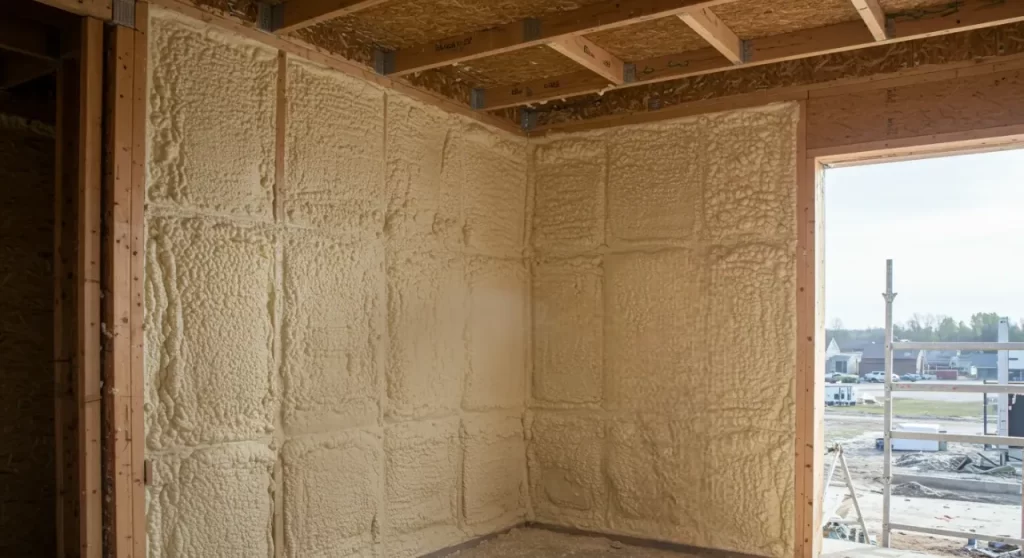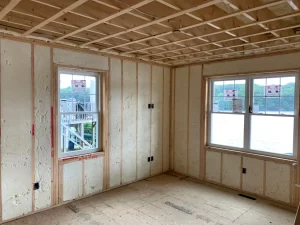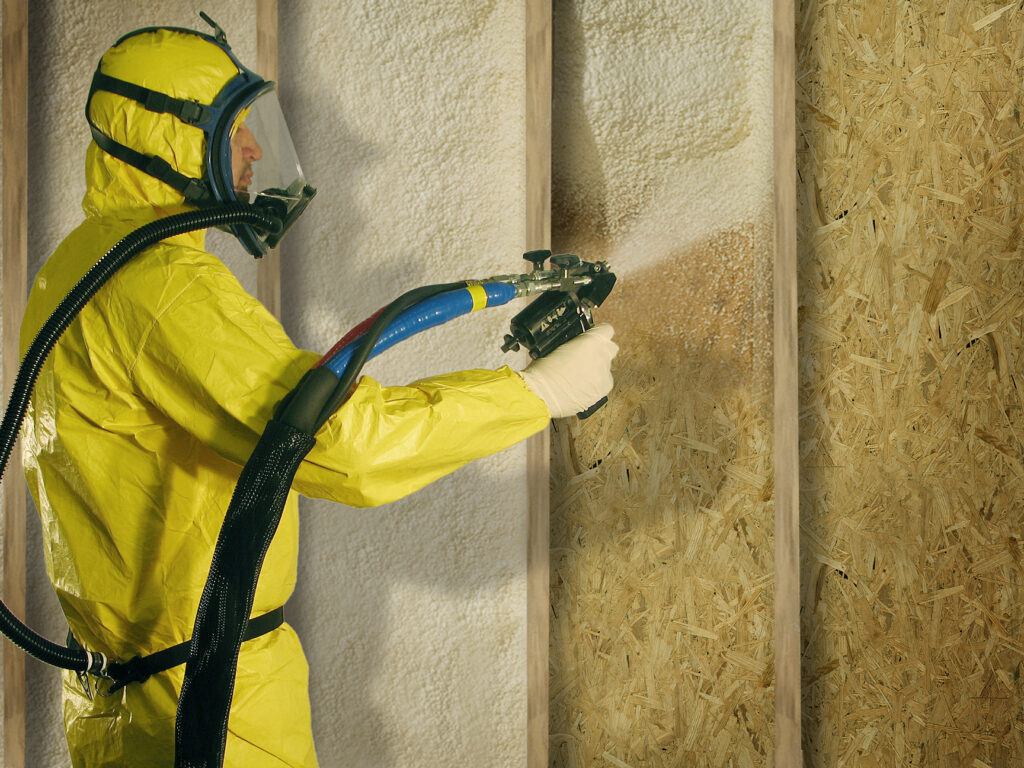The quality of insulation directly impacts both comfort levels and energy costs in Oxford, MA homes. Properly installed, high-performance insulation creates an effective thermal barrier that keeps homes warm in winter and cool in summer while significantly reducing energy bills. This matters more now than ever as energy costs continue to rise and climate patterns become more extreme in Massachusetts.
Recent data shows Oxford homeowners can save 15-30% on heating and cooling costs with proper insulation upgrades. These savings come from addressing specific Northeast climate challenges that affect Oxford properties year-round.
How Climate Changes Affect Oxford Home Insulation Needs
Oxford’s location in central Massachusetts exposes homes to harsh winter conditions with temperatures frequently dropping below freezing, alongside increasingly hot and humid summers. According to climate data from the National Weather Service, the region has experienced a 10% increase in temperature fluctuations over the past decade (NOAA Regional Climate Center, 2024).
These climate shifts demand insulation solutions that:
- Prevent heat loss during extended cold periods
- Block heat gain during summer months
- Control moisture and prevent condensation issues
- Maintain consistent indoor comfort regardless of outdoor conditions
Bonus Tip: Focus particular attention on insulating north-facing walls in Oxford homes, as these areas typically experience the greatest heat loss during winter months.
Insulation Options for Oxford Homes
Oxford homeowners have several insulation options, each with distinct performance characteristics:
| Insulation Type | R-Value Per Inch | Best Applications | Cost Range | Energy Savings Potential |
|---|---|---|---|---|
| Open-Cell Spray Foam | 3.5-3.7 | Interior walls, sound-dampening | $$$-$$$$ | 20-30% |
| Closed-Cell Spray Foam | 6.0-7.0 | Exterior walls, basements, and moisture-prone areas | $$$$-$$$$$ | 30-50% |
| Blown-In Cellulose | 3.2-3.8 | Attics, existing wall cavities | $$-$$$ | 15-25% |
| Mineral Wool | 3.0-3.3 | Fire-resistant applications, soundproofing | $$-$$$ | 10-20% |
The Massachusetts Department of Energy Resources reports that homes with properly installed spray foam insulation maintain 40% better thermal performance during extreme weather events compared to homes with traditional fiberglass batts (Mass DOER Energy Efficiency Report, 2024).
Things to Consider Before Making an Insulation Decision
- Home Age and Construction – Oxford has many homes built before modern energy codes. Older homes (pre-1980s) typically require more comprehensive insulation solutions.
- Problem Areas – Identify specific issues like drafty rooms, ice dams, or uneven temperatures that indicate insulation gaps.
- Long-Term Goals – Balance upfront costs against lifetime energy savings and comfort improvements.
- Air Sealing Needs – Insulation works best when combined with proper air sealing, particularly in older Oxford homes with numerous air leaks.
- Ventilation Requirements – Proper insulation changes how air moves through a home, potentially requiring ventilation adjustments.
Bonus Tip: Schedule an energy audit specifically calibrated for New England homes before making insulation decisions. These audits identify the exact locations where insulation improvements will deliver the greatest returns.
Technical Specifications for Common Insulation Choices
| Property | Closed-Cell Spray Foam | Open-Cell Spray Foam | Blown-In Cellulose | Mineral Wool |
|---|---|---|---|---|
| Air Barrier | Yes | Partial | No | No |
| Vapor Barrier | Yes (≥2 inches) | No | No | No |
| Water Resistant | High | Low | Moderate with treatment | High |
| Sound Dampening | Moderate | Excellent | Good | Excellent |
| Installation Temperature | 40°F minimum | 40°F minimum | Any temperature | Any temperature |
| Expansion | 30-60x initial volume | 100-120x initial volume | None | None |
| Lifespan | 50+ years | 30+ years | 20-30 years | 50+ years |
Comprehensive Insulation Services
Lamothe Insulation and Contracting offers specialized insulation solutions in Oxford, MA climate conditions:
- Open-Cell Spray Foam Insulation: Creates a flexible air barrier with excellent sound-dampening properties, ideal for interior walls and ceilings in Oxford homes.
- Closed-Cell Spray Foam Insulation: Delivers maximum thermal performance and moisture resistance, perfect for basements and exterior walls that face harsh New England winters.
- Insulation Removal: Safely removes old, damaged, or ineffective insulation materials before installing updated solutions.
- Thermal & Intumescent Coatings: Specialized coatings that enhance fire resistance and thermal performance of existing structures.
- Blown-In Insulation: Quick and effective solution for attics and existing wall cavities requiring minimal disruption to living spaces.
- Mineral Wool Insulation: Fire-resistant option that excels in soundproofing applications while providing reliable thermal performance.
- Blown-in Cellulose Insulation: An environmentally friendly option made from recycled materials that effectively fills irregular spaces.
- Dense-Pack Cellulose: High-density application technique that prevents settling and maximizes performance in vertical wall cavities.
Common Questions About Insulation Projects
What areas of an Oxford home typically need insulation improvement first?
Attics typically offer the highest return on investment, followed by basements and exterior walls. In Oxford’s climate, addressing these areas can reduce heating costs by up to 20% according to the Department of Energy.
How long does spray foam insulation installation take for an average Oxford home?
Most residential spray foam projects in Oxford are completed within 1-2 days, depending on home size and project scope. Larger homes may require 3-4 days for comprehensive insulation.
Can insulation be installed during winter in Oxford?
Yes, indoor insulation projects can be completed year-round. However, spray foam applications require minimum temperature requirements (typically above 40°F) for proper curing and performance.
How does proper insulation affect indoor air quality?
Quality insulation creates an effective barrier against outdoor pollutants and allergens. When paired with appropriate ventilation, it helps maintain healthier indoor air quality throughout Oxford’s changing seasons.
Frequently Asked Questions
How long does quality insulation last in Oxford homes?
Premium insulation materials like closed-cell spray foam typically last the lifetime of the home (50+ years) without performance degradation. Cellulose may require reassessment after 20-30 years, particularly in areas subject to settling or moisture exposure.
Will better insulation eliminate ice dams on Oxford homes?
Proper attic insulation combined with adequate ventilation significantly reduces ice dam formation by maintaining a consistent roof temperature. For complete protection, both insulation and air sealing must be addressed.
How soon will I notice energy savings after upgrading insulation?
Most Oxford homeowners report noticeable comfort improvements immediately and see measurable energy savings on their first utility bill after installation. Maximum efficiency gains typically appear during extreme temperature months.
Can existing wall insulation be improved without major renovation?
Yes, techniques like dense-pack cellulose and injection foam allow for insulation upgrades with minimal disruption by utilizing small access points that can be easily repaired.
What makes insulation fail prematurely in Massachusetts homes?
The most common causes include moisture problems, improper installation, pest infiltration, and settling over time. Professional installation addresses these risks through proper material selection and application techniques.
Ready to Improve Your Home’s Comfort and Efficiency?
Oxford homeowners facing rising energy costs and extreme weather patterns benefit substantially from upgraded insulation solutions. The right insulation strategy creates immediate comfort improvements while delivering long-term energy savings.
Contact Lamothe Insulation and Contracting at (508) 847-0119 or [email protected] to discuss how targeted insulation improvements can benefit your specific Oxford home.
Author and Reviewer
Author: With over two decades of hands-on experience, Robert Lamothe, owner and lead installer of Lamothe Insulation, brings unparalleled expertise in spray foam insulation, carpentry, and building science. Since 2002, he has earned a reputation for precision, quality craftsmanship, and delivering energy-efficient solutions that stand the test of time. Lamothe Insulation is a family-owned and family-operated business, and Robert also owns the Goddard School of Auburn, an early childhood education school.
Reviewer: Ethan Taylor has 8 years of experience in spray foam insulation. He reviewed this content and suggested ways to simplify business outreach while keeping trust and professionalism intact.








